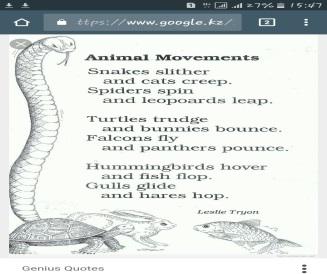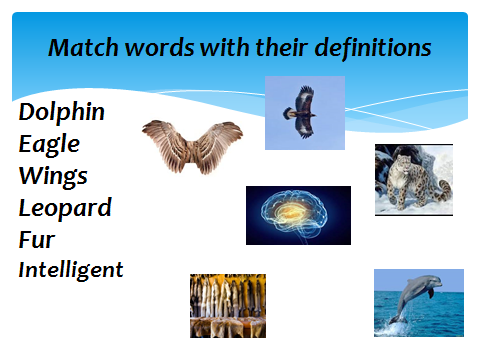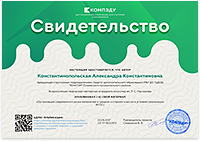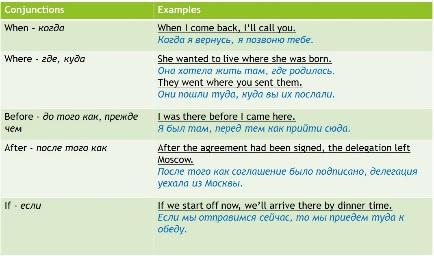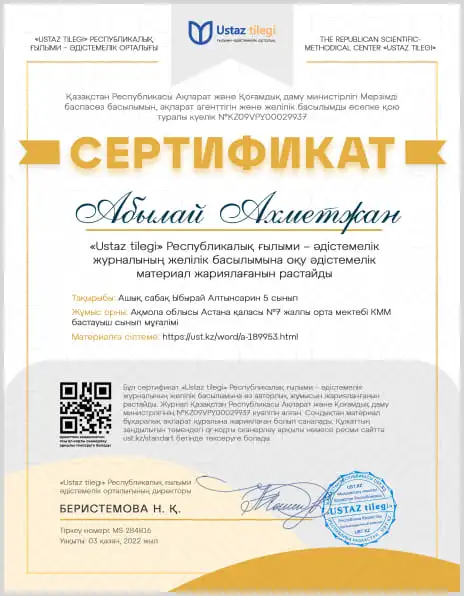«Весенне-летний фестиваль знаний 2023»
- Публикации
- Английский язык
- Уроки
- 5 класс
- Fantasy world: Animals
Short term plan
|
Lesson: Unit 7 Fantasy world |
School: №176 school-gymnasium |
||||
|
Date 21.07.2017 |
Teacher name: Ablemitova Zarina |
||||
|
Class: 5 |
Number present :29 |
Absent: — |
|||
|
Theme of the lesson |
Animals |
||||
|
Learning objectives that this lesson is contributing to |
5R2 understand with little support specific information and detail in short, simple texts on a limited range of general and curricular topics.. 5W3 write with support factual descriptions at text level which describe people, places and objects. 5UE3 use a growing variety of adjectives and regular and irregular comparative and superlative adjectives on a limited range of familiar general and curricular topics 5C6 Organise and present information clearly to others |
||||
|
Lesson objectives |
All learners will be able to: — recognise the new vocabulary — distinguish the usage of superlative and comparative adjectives Most learners will be able to: Write degrees of superlative and comparative adjectives Can answer to the questions from text Some learners will be able to: — say some information about animals. — can describe animals using regular and irregular adjectives |
||||
|
Assessment criteria |
-can say some information about any animal -distinguish the usage of superlative and comparative adjectives — answer the questions |
||||
|
Value links |
Take care of animals |
||||
|
Cross-curriculum |
Biology |
||||
|
ICT skills |
Worksheets, pictures, video |
||||
|
Previous learning |
Reading for pleasure |
||||
|
Plan |
|||||
|
Planned timings |
Planned activities (replace the notes below with your planned activities) |
Resourses |
|||
|
Beginning Lead in 3min Revision of previous lesson 4 min Warm-up 2 min Middle 3 min 3min 4min 2min 9min 5min |
Organization moment. Greeting, duty’s report. Now answer to questions from cards and make a picture from these cards (puzzle of a fish) Questions: who is the author of the this tale? What about this tale? What is the main idea of the tale? Listen, repeat then read the poem : I’ll give you cards with pictures of the animals. Students with the same pictures should sit in one group. I’ll hand out cards with pictures of eagle, leopard and dolphin. What can you say about these pictures? Can you guess today’s our new theme? Our new theme is “Animals” Grammar. Today we also use adjectives to describe animals, that why I want explain you usage of superlative and comparative adjectives of irregular and regular adjectives. Now let’s watch the video. There are examples to the degrees of adjectives. Now please make your own examples. Keys of knowledge. I have some keys of knowledge. I’ll give them to students who answers correct, who will be active.You collect them, then at the end of the lesson who collect more keys wins the big, gold key of knowledge. Now let’s write an exercise. You should put given adjectives in comparative or superlative forms. Put the adjectives in the comparative or superlative forms 1. Dogs are ______ (friendly) than cats. 2 Dolphins are _____________ (intelligent) animals of all. 3. Giraffes have got ________ (long) legs than elephants. 1 Parrots are ________ (colourful) birds of all. 2. Cheetahs are ________ (fast) of all land animals. 3 Horses are _________(big) than goats. 1 Dogs make _______(good) pets of all. 2 Elephants are ________ (heavy) than goats. 3. Eagles are ______(strong) than crowns. Vocabulary Match the words with the pictures Pre reading. Find and underline the new words from the text. While reading: Jigsaw. I’ll hand out different texts about animals to each group. You should read, understand text then should retell it to another group. Post-reading. Now answer to the questions to win more keys. How many species of dolphins are there in the world? Where do snow leopards live? What can you say about the smallest eagle? |
http://www.google.kz/imgres. http://youtu.be/gzQT6TrYTVk Excel 5 WB p52 |
|||
|
End 8 min Reflection 2 min |
Differentiation by level. I’ll give you posters and markers you should choose an animal: Project work. Draw a picture, then describe it using vocabulary. Descriptor: All learners:
Most of them -can describe the animal with support (question-answer) Some of them -can describe the animal without support. Assessment. I’ll hand out you pictures of animals you should write there you feelings from today’s lesson and glue them on the poster with nature’s picture. You should glue them in correct place. What do you see in this picture? I want to say that we should protect our nature, animals. We should take care of them. |
Excel 5 WB p51 |
|||
|
Summary evaluation What two things went really well (consider both teaching and learning)? 1st: 2nd: What two things would have improved the lesson (consider both teaching and learning)? 1st: 2nd: What have I learned from this lesson about the class or individuals that will inform my next lesson? |
|||||
Олимпиады: Английский язык 2 — 11 классы
Содержимое разработки
Short term plan
|
Lesson: Unit 7 Fantasy world |
School: №176 school-gymnasium |
|
|
Date 21.07.2017 |
Teacher name: Ablemitova Zarina |
|
|
Class: 5 |
Number present :29 |
Absent: — |
|
Theme of the lesson |
Animals |
|
|
Learning objectives that this lesson is contributing to |
5R2 understand with little support specific information and detail in short, simple texts on a limited range of general and curricular topics. . 5W3 write with support factual descriptions at text level which describe people, places and objects. 5UE3 use a growing variety of adjectives and regular and irregular comparative and superlative adjectives on a limited range of familiar general and curricular topics 5C6 Organise and present information clearly to others |
|
|
Lesson objectives |
All learners will be able to: — recognise the new vocabulary — distinguish the usage of superlative and comparative adjectives Most learners will be able to: Write degrees of superlative and comparative adjectives Can answer to the questions from text Some learners will be able to: — say some information about animals. — can describe animals using regular and irregular adjectives |
|
|
Assessment criteria |
-can say some information about any animal —distinguish the usage of superlative and comparative adjectives — answer the questions |
|
|
Value links |
Take care of animals |
|
|
Cross-curriculum |
Biology |
|
|
ICT skills |
Worksheets, pictures, video |
|
|
Previous learning |
Reading for pleasure |
|
|
Plan |
||
|
Planned timings |
Planned activities (replace the notes below with your planned activities) |
Resourses |
|
Beginning Lead in 3min Revision of previous lesson 4 min Warm-up 2 min Middle 3 min 3min 4min 2min 9min 5min |
Organization moment. Greeting, duty’s report. Now answer to questions from cards and make a picture from these cards (puzzle of a fish) Questions: who is the author of the this tale? What about this tale? What is the main idea of the tale? Listen, repeat then read the poem : I’ll give you cards with pictures of the animals. Students with the same pictures should sit in one group. I’ll hand out cards with pictures of eagle, leopard and dolphin. What can you say about these pictures? Can you guess today’s our new theme? Our new theme is “Animals” Grammar. Today we also use adjectives to describe animals, that why I want explain you usage of superlative and comparative adjectives of irregular and regular adjectives. Now let’s watch the video. There are examples to the degrees of adjectives. Now please make your own examples. Keys of knowledge. I have some keys of knowledge. I’ll give them to students who answers correct, who will be active.You collect them, then at the end of the lesson who collect more keys wins the big, gold key of knowledge. Now let’s write an exercise. You should put given adjectives in comparative or superlative forms. Put the adjectives in the comparative or superlative forms 1. Dogs are ______ (friendly) than cats. 2 Dolphins are _____________ (intelligent) animals of all. 3. Giraffes have got ________ (long) legs than elephants. 1 Parrots are ________ (colourful) birds of all. 2. Cheetahs are ________ (fast) of all land animals. 3 Horses are _________(big) than goats. 1 Dogs make _______(good) pets of all. 2 Elephants are ________ (heavy) than goats. 3. Eagles are ______(strong) than crowns. Vocabulary Match the words with the pictures Pre reading. Find and underline the new words from the text. While reading: Jigsaw. I’ll hand out different texts about animals to each group. You should read, understand text then should retell it to another group. Post-reading. Now answer to the questions to win more keys. How many species of dolphins are there in the world? Where do snow leopards live? What can you say about the smallest eagle? |
http://www.google.kz/imgres. http://youtu.be/gzQT6TrYTVk Excel 5 WB p52 |
|
End 8 min Reflection 2 min |
Differentiation by level. I’ll give you posters and markers you should choose an animal: Project work. Draw a picture, then describe it using vocabulary. Descriptor: All learners:
Most of them -can describe the animal with support (question-answer) Some of them -can describe the animal without support. Assessment. I’ll hand out you pictures of animals you should write there you feelings from today’s lesson and glue them on the poster with nature’s picture. You should glue them in correct place. What do you see in this picture? I want to say that we should protect our nature, animals. We should take care of them. |
Excel 5 WB p51 |
|
Summary evaluation What two things went really well (consider both teaching and learning)? 1st: 2nd: What two things would have improved the lesson (consider both teaching and learning)? 1st: 2nd: What have I learned from this lesson about the class or individuals that will inform my next lesson? |
Получите свидетельство о публикации сразу после загрузки работы
Получите бесплатно свидетельство о публикации сразу после добавления разработки
Long-term plan: Unit 7 Fantasy world
School: Secondary school after K.Mendaliev
Date: 18.05.2018
Teacher name: Mendikhanova G.Sh.
Grade: 5
Number present:
absent
Lesson title: World
Learning objective
5.L1understand a sequence of supported classroom instructions
5.R2 understand with little support specific information and detail in short simple texts on a limited range of general and curricular topics
5.S6 communicate meaning clearly at sentence level during, pair, group and whole class exchanges
Lesson objectives
-
Understand the listening song and put the pictures in order
-
Read and define the main idea in the text
-
Identify details in a text with little support
-
Demonstrate an ability to express ideas clearly
Assessment criteria
-
Connect logically information with ideas of other people
-
Encourage students’ creativity and create a positive attitude to speaking
-
Demonstrate, organize and express abilities clearly
Value links
Learners are taught to be literacy
Common history, culture and language (“Mangilike Yel”, 6)
Cross curricular links
Geography Literature
ICT skills
Active board and projector to present the material
Previous learning
Basic knowledge about mythical creature
Plan
Planned timings
Planned activities
Resources
Start
2 min
5- 7 min
Middle
10 min
(W) Greetings
– Good morning! Welcome to our lesson.
T. divides the students into 3 groups using the method of puzzles:
Students take a piece of paper and should collect the picture.
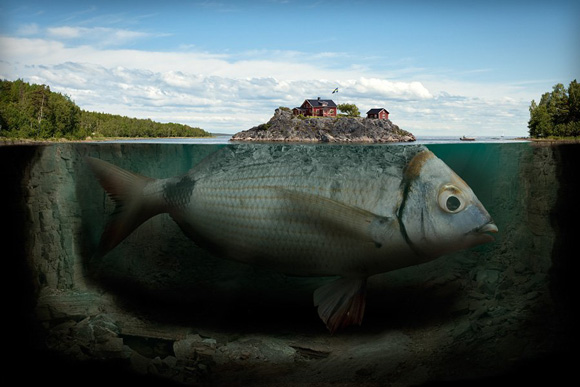

world of illusions Fantasy world Mythical world
1,2,3 groups
—What pictures have you got? The world of illusion, mythical, dream.?
-How do we call them?
-Predict the theme of the lesson. Today we are going to speak about fantasy world, mythical creatures.
(W) Listening. “Weird Sisters Harry Potter Song”
Pre – Listening
-What other creatures do you know? Name them.
-What are their feature?
While- Listening
-Listen to the song and put the pictures in order.
Post Listening
-Play the song again and check answers. Pause the song after each verse and elicit or say the animals, learners repeat. Check answers as a class.
(W) Reading
Pre-reading
—Have you ever read stories about fantasy animals?
-Look at the pictures. Which shows:
a lion? a mouse? a centaur? a minotaur? a Pegasus, hydra, wolf.
Puzzle
pictures
20min
End
2 min
(W) While reading.
Differentiation by tasks
The first A group — Complete the crossword.
The second B group — Read the text and complete the sentences.
The third C group — Identify similarities and differences.
Text: “Escape to Narnia” Answer the (Wh) questions.

Answer the (Wh) questions.
-
What is the text about?
-
Who is the king of Narnia?
-
What kind of Aslan’s character?
-
What mythical creatures has Narnia?
Descriptor:
-Answer the (Who) questions using the details of the text
(G) Post Reading.
A group. Complete the crossword.
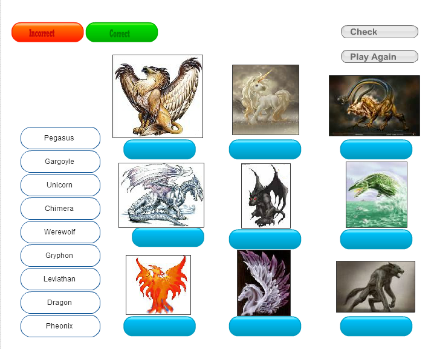
Descriptor:
-Find the correct words
B group. Read the text and complete the sentences.
-
The writer of the Narnia is…
-
The king of Narnia is………
-
Reepicheep can………
-
Gryphons can……….
-
Centaurs look like…….
-
Minotaurs are against………
Descriptor:
-Fill in the gaps. Find appropriate words.
C group. Vein diagram.
Compare animals and mythical creatuers. Speak similarities and differences between them. Fore example: Horse—Centaur
Descriptor:
-Identify similarities and differences.
(W) Creative work.
Invent and draw a picture of your mythical creature, think of a name, and present it to the class.
Descriptor:
-
Draw and describe mythical creatures
-
Organize information logically
Feedback.
“Landmines area” Method
-
What was the theme of our lesson?
-
What animals did we talk about?
-
What was the text about?
-
What similarities and differences you were identify
-
What was the most difficult thing?
-
What new they have learnt?
Evaluation. Sel
The teacher asks the students about the most difficult things they have faced during the lesson.

Activity 3-4
I can do all the tasks
Activity 2-3
Activity 1
ADDITIONAL INFORMATION
Differentiation – how do you plan to give more support? How do
you plan to Differentiation – how do you plan to give more support? How do you plan to challenge the more able learners?
Assessment – how are you planning to check learners’ learning?
Cross-curricular links
ICT links
Values links
-
More support can be given in the speaking activity when learners work in group
-
More able learners can be appraised with providing them a kind of creative work to express their opinions
Peer-assessment (palm-fist)
-
Thumbs up if they understood everything /thumbs down- didn’t understand/ thumbs left or right – understood 50 percent Through assessment
-
This relates to: Real life
Reflection
Were the lesson objectives/learning objectives realistic?
What did the learners learn today?
What was the learning atmosphere like?
Did my planned differentiation work well?
Did I stick to timings? What changes did I make from my plan and why?
Did I stick to timings?
What changes and differentiation should I make next time?
Use the space below to reflect on your lesson. Answer the most relevant questions from the box on the left about your lesson.
Summary evaluation
What two things went really well (consider both teaching and learning)?
1:
2:
What two things would have improved the lesson (consider both teaching and learning)?
1:
2:
What have I learned from this lesson about the class or individuals that will inform my next lesson?
What have I learned from the reflection of the learners? (difficulties of individuals or all the learners)
Unit of a long term plan Unit 7: Fantasy world
School:
Date:
Teacher name:
CLASS: 5
Number present:
absent:
Lesson title
World 1
Learning objectives(s) that this lesson is contributing to (link to the Subject programme)
5.L1understand a sequence of supported classroom instructions
5.S6 communicate meaning clearly at sentence level during, pair, group and whole class exchanges
5.UE16 use conjunctions so , if, when , where, before, after to link parts of sentences on a limited range of familiar general and curricular topics
Lesson objectives
All learners will be able to:
Answer the questions about cities and countries in all over the world.
Recognize conjunctions
Most learners will be able to:
Say their opinion about the poem based to the theme
Name the cities or countries by watching the picture
Make the sentences using conjunctions if, when, where, after
Some learners will be able to:
Discribe their favourit part of he world using some conjunctions
Assessment criteria
-
Recognize different kind of names of countries and cities in all over the world.
-
Making some sentendcces using necessary conjunctions based to the task
-
Speaking fluently in English at the time of describing their favorite part of the world
Values links
Universal Labor Society
Cross-curricular links
Geography
Previous learning
City 2,
Plan
Planned timings
Planned activities (replace the notes below with your planned activities)
Resources
Start
2minutes
-
Greeting! How are you?
This “Wonderful World”
I love the nature
Around you and me – This is world
I love the beauty
Of the sky-blue sea – This is world
He loves the stars
In the dark night sky – This is world
She loves the flutter
Of the butterfly.
They love to travel
And see the world.
Let’s make the Earth
Close place for all!
(f) giving smiles
Task 1
I shall hand out pictures, you should write, and the pictures names of the things. Work in pairs and assess each other
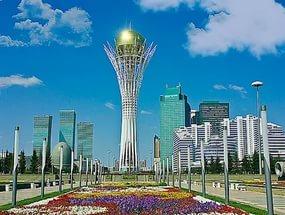

Differentiation
All learners will be able to name the cities by the help of the pictures
Some of them will be able to make word combinations based to the task
Find answers fit to the questions
Find the city or the country based to the picture
Some learners will be able to describe their favorite city or country using conjunctions.
Make some sentences using conjunctions based to the task
During the work the teacher uses Images: what’s happening?
Show learners an image or images. Learners should identify what they think is occurring in the image(s) and give a reason for their interpretation.
Descriptor
Learners can:
-
Identify picture name the country or the city based to the theme
-
Write the words related to the pictures
-
Make some sentences using conjunctions
(f) pair assessment by descriptor
PPT
Pictures
Middle
Task 2
-
If we protect our world from war, it will be very good. World where will not be cruelty, it will be a wonderful world. After the II World War peoples, life was very difficult. When the world is kinder?
-
….. we protect our world from war, it will be very good. World ……. will not be cruelty, it will be a wonderful world. ……. the II World War peoples, life was very difficult. …… the world is kinder?
-
where world not a wonderful be, it will be cruelty world will.
world the kinder is when ?
Key to the task :
Descriptor:
-
Find conjunctions
-
Complete missed words
-
Jumbled words
Differentiation
All leaners will be able to find conjunctions
Most learners will be able complete missed words
Some learners will be able to write words in order
During the work, the teacher uses Think-Pair-Share (P) Students work in pairs. They choose personal information, ask and answer questions.
Assessment by giving smiles
Comment only marking
Cards
End
Reflection
When I was at the lesson – I understood…..
I doubted
I didn’t understand
Evaluation sheets
Additional information
Differentiation – how do you plan to give more support? How do you plan to challenge the more able learners?
Assessment – how are you planning to check learners’ learning?
Health and safety check
By outcome(lesson objectives, assessment criteria)
By task (the complexity of the task)
By content ( motivating topics and context)
Through support (teacher’s support feedback)
Observe learners when participating in discussion .did the group dynamics work?
Did each learner contribute to the discussion ?if not, why not?(e.g. didn’t understand what to de ,not so confident speaking English,..)
Work with the SMART board not more than 10 minutes .
Doing time brake it’s about 2 minute during the lesson.
Reflection
Were the lesson objectives/learning objectives realistic?
Did all the learners achieve the lesson objectives/ learning objectives? If not, why?
Did my planned differentiation work well?
Did I stick to timings?
What changes did I make from my plan and why?
Use the space below to reflect on your lesson. Answer the most relevant questions from the box on the left about your lesson.
Summary evaluation
What two things went really well (consider both teaching and learning)?
1:
2:
What two things would have improved the lesson (consider both teaching and learning)?
1:
2:
What have I learned from this lesson about the class or individuals that will inform my next lesson?
LESSON: Unit 7:
Fantasy World
City
School: 40
Date:
Teacher name: Tukhamanova A.D
CLASS: 5
Number present:
absent:
Learning objectives(s) that this lesson
is contributing to
5.C4 evaluate
and respond constructively to feedback from others
5.S6 communicate
meaning clearly at sentence level during, pair, group and whole class
exchanges
5.S7use appropriate
subject-specific vocabulary and syntax to talk about a limited range of
general topics
Lessonobjectives
All learners will be able to:
·
use
new vocabulary concerning the topic «fantasy city»
·
use
comparative and superlative adjectives with some support
·
write a persuasive text with some support
Most learners will be able to:
·
use
comparative and superlative adjectives with a little support
·
make
a dialogue using new words
·
write a persuasive text with a little support
Some learners will be able to:
·
use comparative and superlative adjectives with no support
·
create a fantasy map of an ideal city and write a persuasive
text
Language objectives
·
Topic vocabulary: garbage, crowded, comfortable, tall, outdoor,
polluted, air, jammed
·
comparative and superlative adjectives
Value links
Respect and Cooperation
Cross curricular links
Real life
ICT
skills
Projector or
Smart board for presenting a presentation.
Previous learning
Describing fantasy cities
and reading, writing and talking about them.
Plan
Planned timings
Planned activities
Resources
5min
Greeting
Checking up the hometask
Setting the aim
Warm up
Teacher asks to watch a video about
«Fantasy city» Differentiation
Less able Ss write words they know that
come to their mind.
More able Ss write 2-3 sentences trying
to describe it.
PPP(slide 1-2)
https://www.youtube.com/watch?v=2gLhjEWvM1k
Middle
13min
15min
5min
Pre-teach
vocabulary
Teacher distributes
cards «Talking about cities».
Differentiation:
Less able
Ss will be given this task:
Ss try to
complete the
sentences with the words below:
·
garbage
·
crowded
·
comfortable
·
tall
·
outdoor
·
polluted
·
air
·
jammed
·
transportation
More able
Ss create their own sentences by describing pictures.
Speaking
Teacher encourages
Ss to create short conversations about their city using the vocabulary and
sentences and try to expand:
A: What do
you like about your city?
B:_________________________________
A:Why is
that?/ What do you mean?
B:_________________________________
A: And
what do you dislike about your city?
B:_________________________________
A: Why is
that a problem?
B:_________________________________
Peer-assessment
(palm-fist)
Thumbs up
if they understood everything /thumbs down- didn’t understand/ thumbs left or
right – understood 50 percent
Cards«Talking about cities».
Appendix 1
PPP(slide 3)
2min
Feedback
What was the most difficult thing? What
new they have learnt?
Lesson part II
Middle
15 min
29 min
This activity
can be completed by a student individually, but working together in small
groups (ideally 2-4 students in each) will provide more practice with the
target language as students negotiate the task and each person’s input.
Instructions:
1. Print a blank
map and set of rectangles/cards for each group.
2. Cut out the
rectangles into individual cards and group together as a complete set with a
blank map.
3. Give each
group a set of cards and a blank map. Have them distribute the cards among
themselves.
4. Instruct them
to write in the names of each building on the map according to the directions
on the cards. [Note: If they have trouble, advise them to start with cards
about the hospital.]
5. When the
buildings have all been labeled, allow students to check their work against
the answer key/map.
6. Give students
the worksheet to answer questions concerning the map.
Project work.
Creating fantasy city
Learners create
a fantasy city using a blank map grid. They decide which features to include;
make a key with symbols; write coordinates where the features can be found.
They give the city a name.
Learners in pairs brainstorm adjectives
they can use to persuade people to visit their city to describe their fantasy
city and its features e.g. Encourage learners to practise comparative and
superlative adjectives;
beautiful, the best, better than any
city in the country, clean, great, happy place, nice, exciting, famous, fine,
top, excellent
Explain what a persuasive text is. Below
their map learners write a short, persuasive text to try to get people to
visit their city. (30-50 words)
Assessment criteria
Student
·
Can use new words (beautiful, garbage, exciting etc) At least 3
words
·
Can present his/her ideal city creatively
·
can use comparative and superlative adjectives
·
can write 30-50 words
Appendix 2
Markers, A3 paper, crayons, glue,
scissors
Copybooks
PPP(slide 4)
End
1min
Feedback
At the end of the lesson, the T asks the
students to assess the lesson using a technique two stars and a wish
Evaluation
Stickers
Additional information
Differentiation – how do you plan to
give more support? How do
you plan to challenge the more able
learners?
Assessment – how are you planning to
check learners’ learning?
Cross-curricular links
Health and safety check
ICT links
Values links
Additional Support
·
Offer more support to weaker students at the
presentation stage.
More-
able learners
write 2-3 sentences trying to describe a
video
Peer-assessment
(palm-fist)
·
Thumbs up if
they understood everything /thumbs down- didn’t understand/ thumbs left or
right – understood 50 percent
·
This relates to: Real life
Reflection
Were the lesson
objectives/learning objectives realistic?
What did the
learners learn today?
What was the
learning atmosphere like?
Did my planned
differentiation work well?
Did I stick to
timings? What changes did I make from my plan and why?
Use the space below to reflect on your
lesson. Answer the most relevant questions from the box on the left about
your lesson.
Summary evaluation
What two things
went really well (consider both teaching and learning)?
1:
2:
What two things would
have improved the lesson (consider both teaching and learning)?
1:
2:
What have I learned from this lesson
about the class or individuals that will inform my next lesson?
Материалдар / Lesson short plan for 5 grade «Fantasy World»
Аттестацияның пробный
сұрақтарын тапсырып
тестке дайындалыңыз!
Ұлттық тестілеу орталығының тақырыптары бойынша жасалған
Материал туралы қысқаша түсінік
Lesson short plan for 5 grade «Fantasy World» for updated Programme
Авторы:
Автор материалды ақылы түрде жариялады.
Сатылымнан түскен қаражат авторға автоматты түрде аударылады. Толығырақ
22 Желтоқсан 2017
4908
6 рет жүктелген
Бүгін алсаңыз
30% жеңілдік
беріледі
770 тг 539 тг
Тегін турнир Мұғалімдер мен Тәрбиешілерге
Дипломдар мен сертификаттарды алып үлгеріңіз!
Бұл бетте материалдың қысқаша нұсқасы ұсынылған. Материалдың толық нұсқасын жүктеп алып, көруге болады
Text Centered
«Ustaz tilegi» Республикалық ғылыми – әдістемелік журналы министірліктің №KZ09VPY00029937 куәлігімен ресми тіркелген.
Бұл сертификат «Ustaz tilegi» Республикалық ғылыми – әдістемелік журналының желілік басылымына өз авторлық жұмысын жарияланғанын растайды. Журнал Қазақстан Республикасы Ақпарат және Қоғамдық даму министрлігінің №KZ09VPY00029937 куәлігін алған. Сондықтан аттестацияға жарамды.
Сайтта заңсыз жарияланған материалды көрсеңіз бізге хабарласыңыз. Редакцияның көзқарасы автордың көзқарасымен сәйкес келмеуі мүмкін.
Материал іздеу
Сіз үшін 400 000 ұстаздардың еңбегі мен тәжірибесін біріктіріп, ең үлкен материалдар базасын жасадық. Төменде пәніңізді белгілеп, керек материалды алып сабағыңызға қолдана аласыз
Барлығы 663 959 материал жиналған

